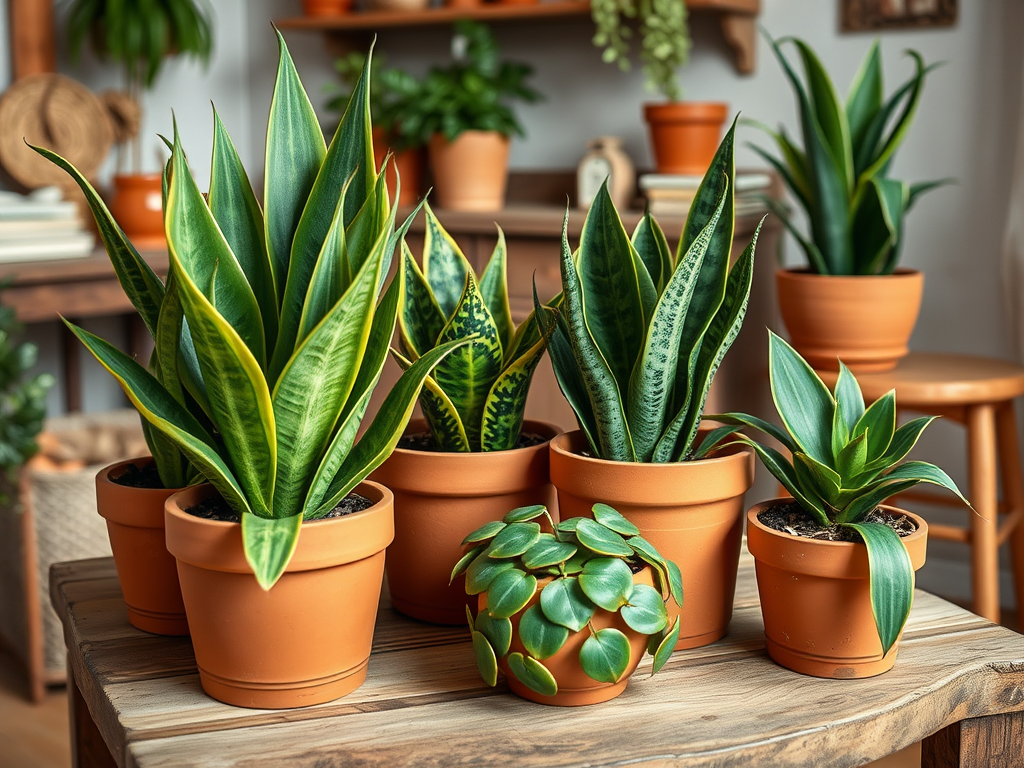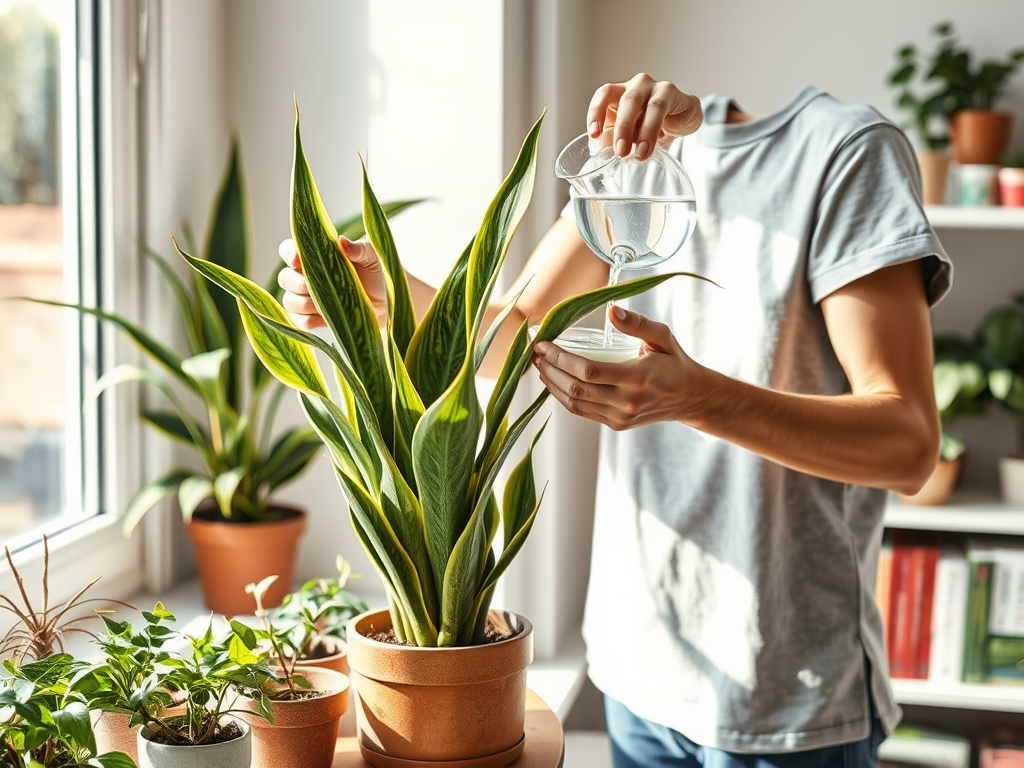Snake plants, also known as Sansevieria or mother-in-law’s tongue, have become a favorite among indoor gardening enthusiasts. Their striking, sword-like leaves and resilience make them not only beautiful but also remarkably easy to maintain. As urban living environments often limit our access to outdoor greenery, incorporating plants like the snake plant into our home decor plays a vital role in enhancing indoor air quality and providing a sense of tranquility. This guide will delve deep into the essential aspects of snake plant care to help your indoor garden flourish. Whether you are a seasoned plant parent or just starting your journey, understanding these fundamentals can transform any home into a lush oasis.
In the world of indoor plants, the snake plant stands out for its ability to thrive on neglect. Unlike many houseplants that require a diligent watering schedule, snake plants can survive with minimal care, making them an ideal choice for busy lifestyles. However, to ensure these hardy beauties not only survive but truly thrive, it is crucial to know the key components of their care routine. From lighting preferences to watering techniques, and recognizing pests, this guide will equip you with all the knowledge you need to nurture your snake plants effectively.
Understanding Snake Plants

Snake plants originate from the deserts of Africa and Asia, where they adapted to survive in extreme conditions. Not only are they hardy, but their unique structural form also draws attention. Varieties like the “Laurentii” and “Moonshine” offer diverse aesthetics, featuring patterned leaves that can brighten any living space. Furthermore, these plants have air-purifying qualities, making them invaluable allies in the quest for cleaner indoor air. In fact, studies suggest that snake plants can absorb toxins such as formaldehyde and benzene, making them both decorative and functional.
Ideal Growing Conditions

Light Requirements
While snake plants are often lauded for their low-light adaptability, achieving the best growth comes from providing them with indirect sunlight. Positioning them near a window with filtered light or in bright, indirect areas can ensure they flourish. However, avoid direct harsh sunlight as it may scorch their lovely leaves. Here’s a quick overview of their light needs:
- Low Light: Survives in dim spaces.
- Medium Light: Thrives better, retains vibrant color.
- High Light: Acceptable, but needs shielding from direct sun.
Temperature and Humidity
Snake plants pick up well in typical indoor temperatures, thriving best in ranges of 60°F to 80°F (15°C to 27°C). They are remarkably forgiving when it comes to humidity levels, making them suitable for most indoor environments. However, extremely low temperatures below 50°F (10°C) can be detrimental to their health. As such, it’s essential to monitor the environmental conditions of your indoor space.
Watering Practices
Finding the right balance in watering can make or break your snake plant’s health. Generally, it’s better to err on the side of underwatering than overwatering, as the latter can lead to root rot. In winter, the plant requires less water due to decreased growth. You can establish a watering technique based on the season:
| Season | Watering Frequency |
|---|---|
| Spring/Summer | Every 2-3 weeks |
| Fall/Winter | Every 4-6 weeks |
Always ensure your pot has good drainage, which helps prevent excess water retention that can damage the roots. You may notice signs of overwatering, such as yellowing leaves or a mushy texture, while underwatering can lead to wrinkled, droopy leaves. Keeping an eye on these indicators will guide you to adjust your watering schedule accordingly.
Fertilizing Snake Plants
To maintain a thriving snake plant, it’s important to consider nutrient needs during the growing season. A balanced houseplant fertilizer, diluted to half strength, is typically recommended once every 4-6 weeks in spring and summer. However, fertilizing during the fall and winter months can be reduced significantly as the plant enters dormancy.
Keep an eye out for these common nutrient deficiencies:
- Yellow leaves: May indicate nitrogen deficiency.
- Brown leaf tips: Often a sign of potassium deficiency.
- Stunted growth: Could suggest a lack of phosphorous.
Repotting and Propagation
Repotting snake plants isn’t always necessary, but there are key indicators to watch. If you find roots growing out of the drainage holes or if the plant becomes top-heavy, it may be time to repot, typically recommended every 2-3 years. Spring is the best time for repotting, as it aligns with the plant’s active growth period.
Propagating snake plants can be a rewarding experience. You can choose between the leaf cutting method or division method:
- Leaf Cutting Method: Cut a healthy leaf into sections and plant them in soil.
- Division Method: Separate the rhizomes from a mature plant and pot them individually.
Pest and Disease Management
While snake plants are relatively pest-resistant, they can occasionally fall prey to common pests such as spider mites, mealybugs, and aphids. Regularly inspecting your plants and maintaining good airflow can minimize pest problems significantly. If you notice any pests, you can spray with a gentle insecticidal soap or wipe the leaves with a damp cloth to eliminate them.
Conclusion
In summary, snake plants are low-maintenance yet striking indoor plants that can dramatically enhance your living space. By providing the right conditions, adjusting watering practices, and keeping an eye out for pests or nutritional deficiencies, you can ensure these resilient plants thrive. Don’t hesitate to experiment with different care techniques as you become more familiar with them; nature often rewards curiosity. With a little knowledge and attention, your dedication can lead to a thriving indoor garden.
Frequently Asked Questions
- How often should I water my snake plant?
Water every 2-6 weeks, depending on the season and humidity levels. - Can snake plants grow in low light?
Yes, snake plants thrive in low light but prefer indirect sunlight. - What type of soil is best for snake plants?
A well-draining potting mix, ideally a cactus or succulent blend. - Why are my snake plant leaves turning yellow?
Yellowing leaves are usually a sign of overwatering or lack of proper drainage. - Can I propagate my snake plant in water?
Yes, snake plants can be propagated in water using leaf cuttings, though they may take longer to root compared to soil propagation.


